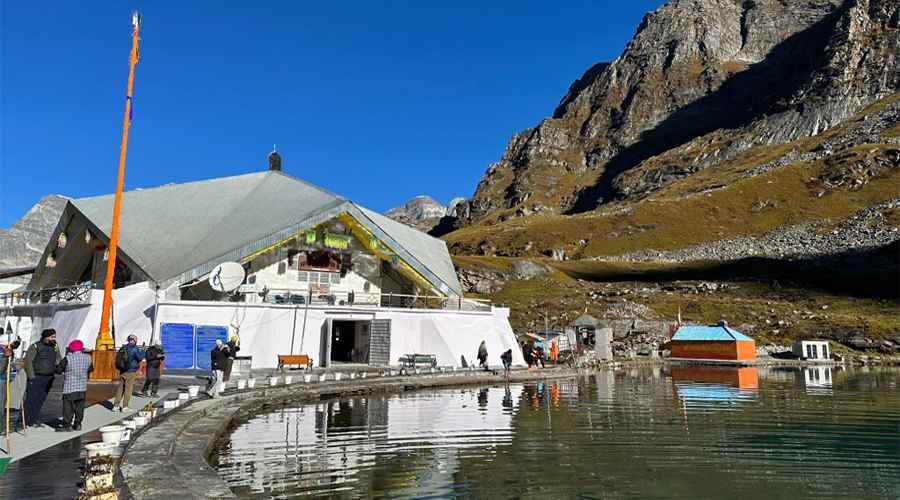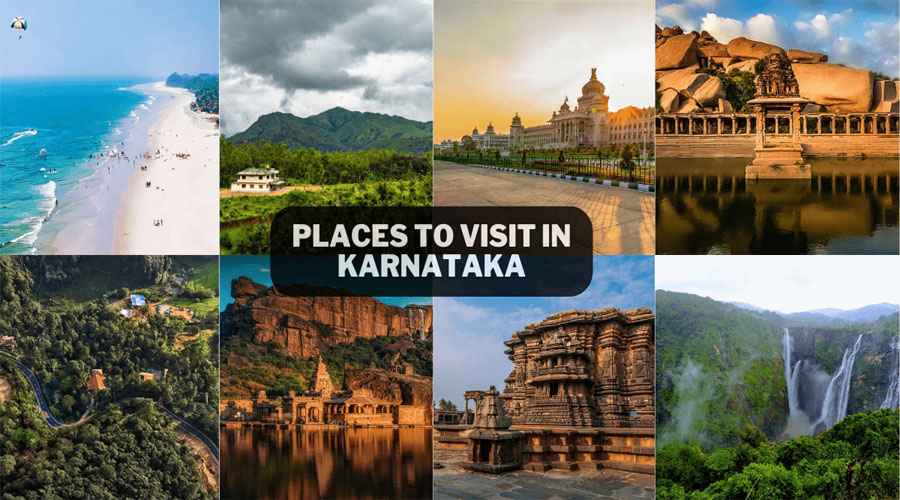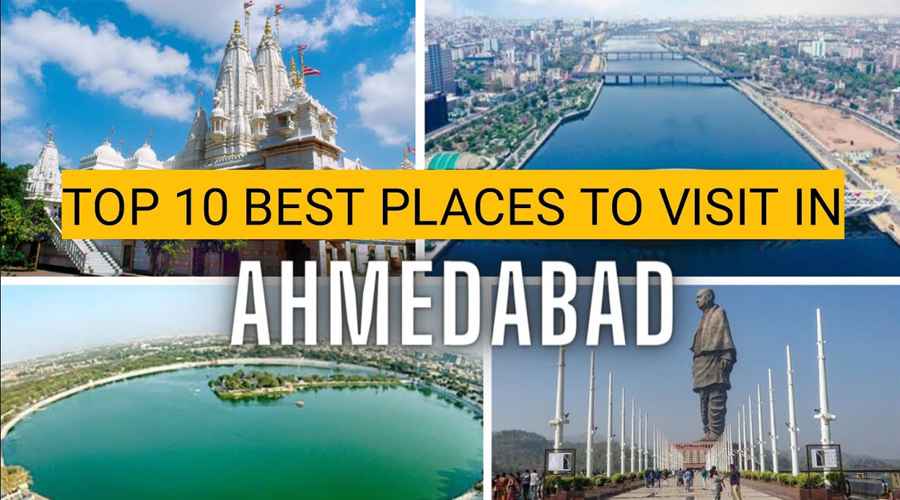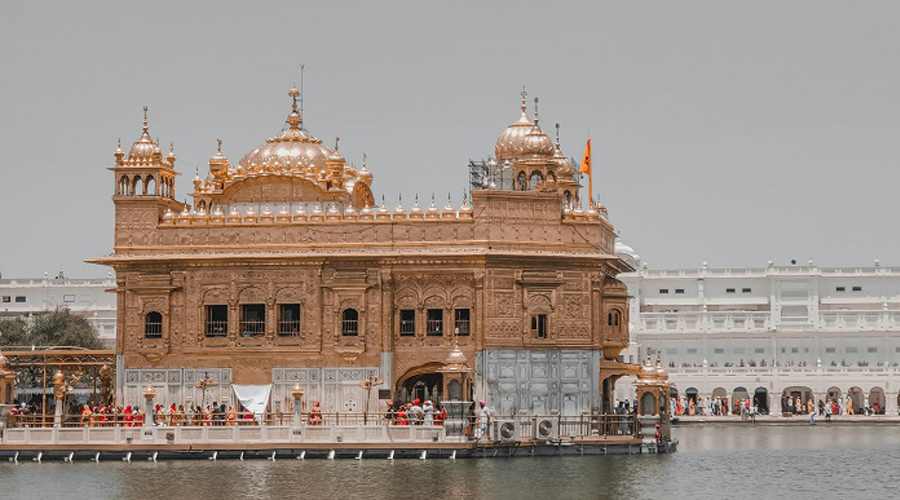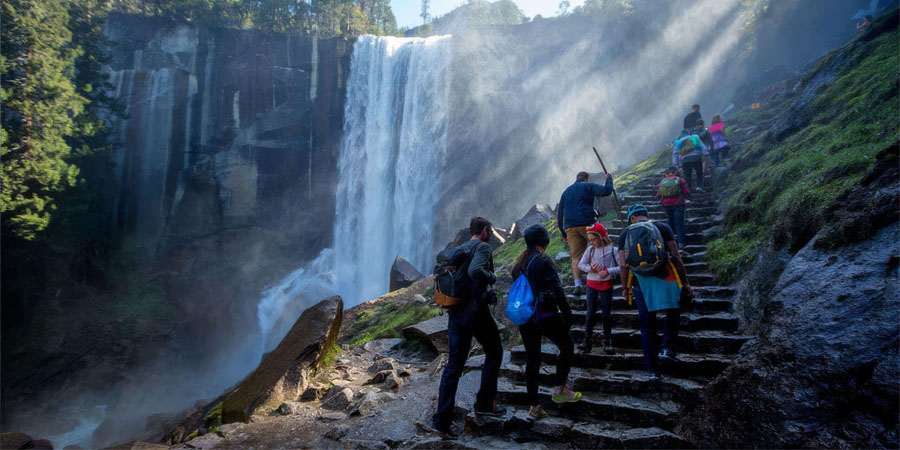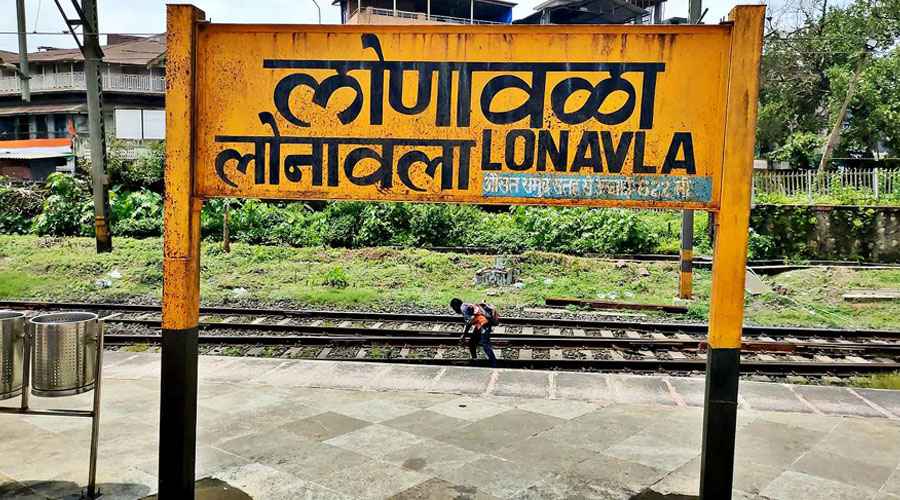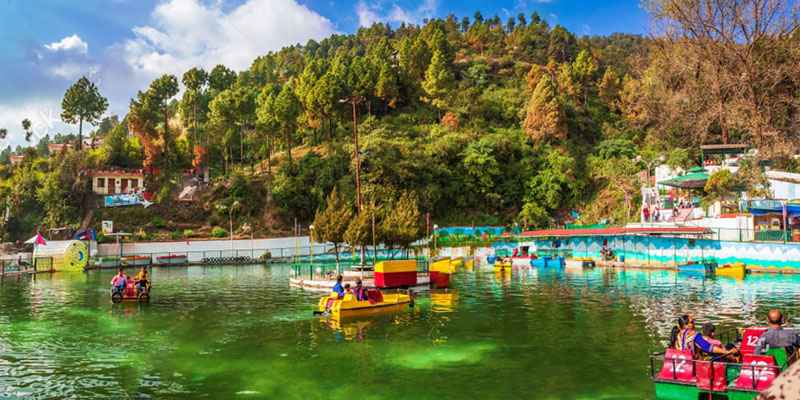Hemkund Sahib, nestled high in the Garhwal Himalayas of Uttarakhand at an elevation of approximately 4,329 meters (14,200 feet), is one of the most revered Sikh pilgrimage destinations in the world. Situated beside the serene and glacial Hemkund Lake, this sacred Gurudwara draws thousands of devotees and trekkers every year who seek spiritual awakening, inner peace, and a glimpse of Himalayan grandeur. Surrounded by seven towering snow-capped peaks, often called the Saptashringa (seven peaks), the site symbolizes purification, resilience, and divine meditation, making it a profound journey for both body and soul.
Historical and Spiritual Significance
View this post on Instagram
The importance of Hemkund Sahib is deeply rooted in Sikh mythology and history. According to Sikh beliefs, the Tenth Guru, Guru Gobind Singh Ji, meditated at this site in his previous incarnation as a warrior named Rama. The word “Hemkund” derives from “Hem” meaning snow and “Kund” meaning bowl or lake, referring to the glacial lake embraced by the surrounding snowy mountains.
This site was rediscovered in the 20th century and has since become a symbol of devotion and sanctity. For Sikhs, Hemkund Sahib represents a place of profound meditation, where the Guru sought spiritual enlightenment away from worldly distractions. The Gurudwara’s white facade with a golden dome, contrasting with the pristine natural surroundings, embodies purity and peace. The holy scripture, Guru Granth Sahib, is revered here, and the community kitchen (langar) provides free meals to pilgrims, showcasing the Sikh value of seva (selfless service) and unity regardless of background.
Hemkund Sahib not only holds immense significance for Sikhs but also resonates with Hindus. The glacial lake is believed to be the meditation site of Lakshman, the brother of Lord Rama, connecting the place to multiple spiritual traditions in India. This shared reverence makes Hemkund Sahib a unique and inclusive spiritual destination.
The Trek and Accessibility
Reaching Hemkund Sahib demands physical stamina and a spirit of adventure as it involves trekking through some of the most breathtaking Himalayan landscapes.
- The pilgrimage usually begins at Govindghat, which can be reached by road from Joshimath, a nearby town.
- From Govindghat, pilgrims undertake a 14-kilometer trek to Ghangaria, the base village where most stay overnight.
- From Ghangaria, the final trek to Hemkund Sahib covers approximately 6 kilometers, ascending steeply to the glacial lake and Gurudwara.
Though physically challenging due to the altitude and rugged terrain, the trek is accessible to most reasonably fit people. Along the way, pilgrims traverse pine forests, cascading waterfalls, rocky paths, and patches of snow even during summer. The journey itself is an immersive experience of nature’s raw beauty combined with spiritual reflection.
Planning the trek during the official pilgrimage season is essential because of harsh winter conditions. The path is generally open from late May through early October, after which snow and freezing temperatures close the region.
Natural Beauty and Surroundings
Hemkund Sahib is set in one of the most scenic locations in the Himalayas. The Gurudwara stands on the edge of Hemkund Lake, a stunning glacial lake that reflects the towering snow-clad mountains around it. These peaks are symbolically associated with the seven Sikh Gurus, adding spiritual symbolism to the natural majesty.
The alpine meadows and forests below the lake teem with diverse flora and fauna, and the pristine environment offers a peaceful retreat from the clutter and noise of modern life. The cool glacial waters and crisp mountain air enhance the serene atmosphere, making it a place that rejuvenates both spiritually and physically.
Best Time to Visit Hemkund Sahib
The ideal time to visit Hemkund Sahib is during the summer months from late May to mid-October, when the weather is relatively mild and the trekking paths are snow-free.
- Peak Pilgrimage Season: June to September, coinciding with the warmer weather and clearer skies.
- Visitors should be prepared for sudden weather changes and carry adequate warm clothing due to the high altitude temperatures that can dip significantly, even in summer.
- The pilgrimage season aligns with the melting of snow, making the treks safer and more accessible.
Spiritual Experience
For many devotees, the journey to Hemkund Sahib is more than just a physical trek — it’s a path to self-discovery, spiritual cleansing, and deep reflection. The silence around the lake, punctuated by hymns and prayer recitations, creates an atmosphere of profound peace. Pilgrims often describe returning from Hemkund Sahib with a transformed perspective and lighter hearts.
The Gurudwara not only offers a place for worship but also embodies the Sikh philosophy of equality and service, with langar meals being served to all visitors regardless of caste or creed. The resilience required to undertake this pilgrimage mirrors the hardship faced by Guru Gobind Singh Ji and his followers in their pursuit of faith.
Important Travel Tips
- Physical Preparation: It is advisable to build stamina and cardiovascular fitness at least a few weeks before the trek.
- Acclimatization: Spend a day resting at Ghangaria to adjust to the altitude and avoid altitude sickness.
- Packing Essentials: Carry warm clothes, rain gear, sturdy trekking shoes, water bottles, and basic medicines.
- Respect the Environment: Hemkund Sahib lies in a fragile ecosystem, so avoid littering and use eco-friendly products.
- Plan for Emergencies: Mobile connectivity can be limited; inform local authorities or guides of your itinerary.
Future Developments
To ease the challenging journey, a ropeway project connecting Govindghat to Hemkund Sahib is underway, expected to provide all-weather access and reduce the physical strain on pilgrims. This infrastructure aims to preserve the fragile environment by limiting foot traffic while improving accessibility for older and differently-abled devotees.
Conclusion
Hemkund Sahib stands as a beacon of faith amidst the formidable Himalayas, offering a unique blend of spirituality, natural beauty, and cultural heritage. It is a destination that challenges the physical limits of pilgrims while enriching their inner selves. The pilgrimage is not just a journey to a place but a transformative experience that invites reflection, devotion, and harmony with nature.
The pristine glacial lake, the snow-capped mountains, and the sacred Gurudwara come together to create a timeless sanctuary where seekers of all backgrounds can find peace and inspiration. Visiting Hemkund Sahib is an unforgettable chapter in one’s spiritual journey—a testament to the power of faith and the serene majesty of the Himalayas.
